Cappella Bella
This chapel (the 2nd on the left) is named in honour of its magnificent frescoes (1501) by Pintoricchio (see below). The date of its construction is unknown, but it was probably built in a programme that included the adjacent chapels and the sacristy, the construction of which was documented in 1478. It was originally the Cappella del Sacramento, but this function was transferred to the ex-sacristy (the present Cappella del SS Sacramento) in 1875, when the Cappella Bella was closed for restoration.
The fine pavement (1566) is made up of ceramic tiles from Deruta.
Frescoes (1501)
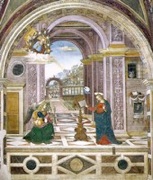
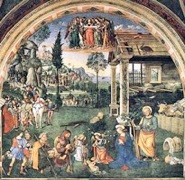
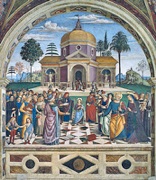
The frescoes on the walls of the chapel were largely ignored by scholars until the 19th century. An exception was the local historian Fausto Gentile Donnola, who referred to what he called the “Cappella Bella” in his “Historia di Spello” (ca. 1621). They depict:
-
✴the Annunciation;
-
✴the Nativity; and
-
✴Christ among the doctors.
The vaults contain figures of four sibyls.
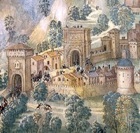
Pintoricchio and his Associates
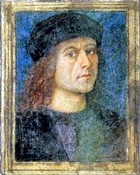
Four other works that were executed in Spello in ca. 1500 are associated with Pintoricchio and/or the workshop that must have been at his disposal at this time:
-
✴the fresco of an angel in the present Cappella del SS Sacramento of Santa Maria Maggiore, which is generally attributed to Pintoricchio himself;
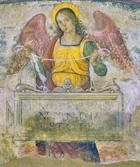
-
✴a detached and largely repainted fresco of the Madonna and Child in the Cappella dei Canonici of Santa Maria Maggiore, which is attributed to Giovanni di Pietro, lo Spagna (who was documented in Spello on two separate occasions in 1502); and
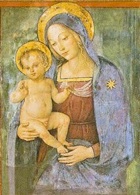
-
✴two works that are attributed to Andrea d’ Assisi, l’ Ingegno:
-
•a fresco of the Madonna and Child with SS Jerome and Bernardino of Siena, which came from the ex-Oratorio di San Bernardino and is now in the Pinacoteca Comunale; and
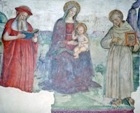
-
•the over-painting of a panel of the Madonna and Child in the Cappella dei Canonici of Santa Maria Maggiore.
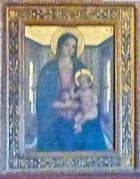
Baglioni Patrons
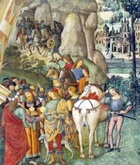
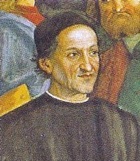
The frescoes were painted soon after the carnage of the “Nozze Rosse” (red wedding or wedding of blood) of Astorre Baglioni, which convulsed the Baglioni family in 1500. The faction to which Gian Paolo and Troilo Baglioni belonged emerged victorious from this inter-family war. Corrado Fratini (referenced below) argues convincingly that they commissioned these extraordinary frescoes because they wanted to underline their newly-established dominance of Spello. In contrast, the frescoes that their defeated and murdered enemy, Grifonetto Baglioni had commissioned about a decade earlier in the Cappella del Salvatore, Sant’ Andrea were allowed to descend into ruin.






